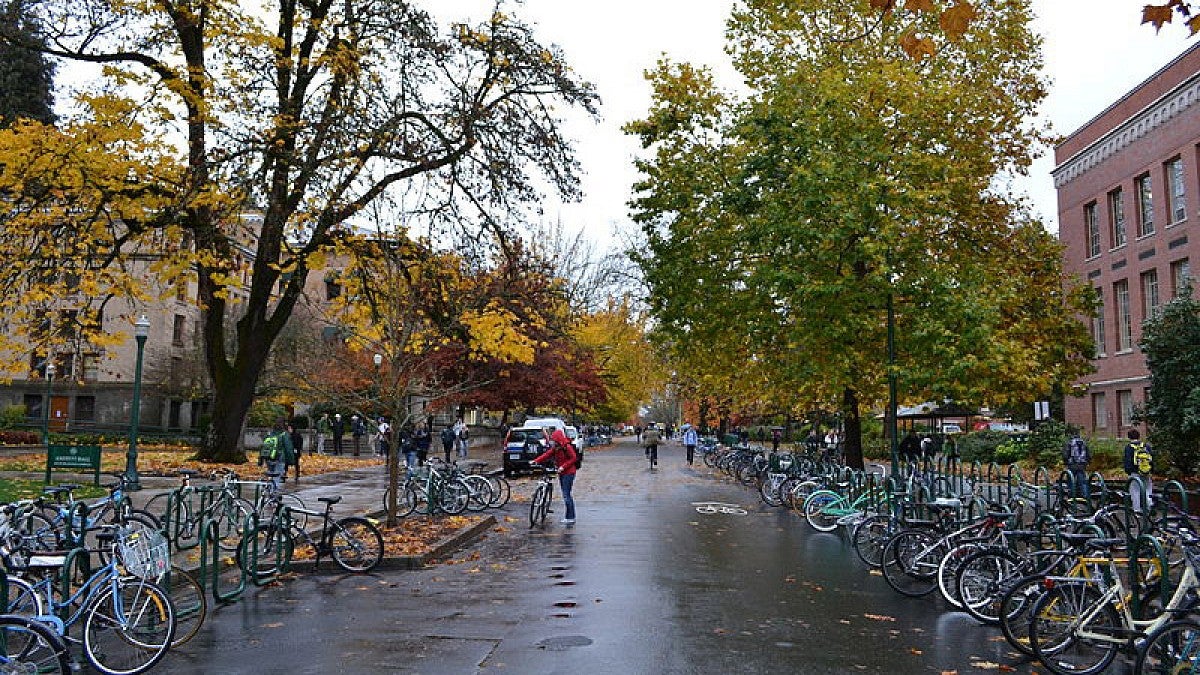Since the start of the COVID-19 pandemic, roadways have become a lot more lonely.
During the first few months of the public health emergency, every trip in a car was a carefully planned event. University of Oregon employees and students continue to mostly work and take classes from home, dropping their regular commutes.
Most people would believe being behind the wheel of a car during a pandemic is probably a lot safer than during normal driving conditions, but the data shows this is not the case. Although it seems counterintuitive, the pandemic has led to riskier driving behavior and deadlier roads in the United States.
The UO’s Vehicle Accident Review Board monitored an alarming market insurance trend which predicted a decrease in number of crashes but an increase in severity. It turns out those early market trends were right.
Preliminary estimates from the National Safety Council show that as Americans began driving less and covering fewer miles, the emptier roads became more lethal. The National Highway Traffic Safety Administration has studied traffic safety throughout the pandemic and found in the early months driving patterns and behaviors changed significantly.
Of the drivers who remained on the roads, some engaged in riskier behavior, including speeding, failing to wear a seatbelt, and driving under the influence of alcohol or drugs. Research studies covering cities in North Carolina, Florida, Maryland and Massachusetts show an increase in riskier behavior while driving during the pandemic.
Many organizations, including the UO, have seen an increase in serious car accidents over the last year, prompting the UO’s Vehicle Accident Review Board to issue an important reminder to follow safe driving rules on the roadways.
The board advises people to follow these basic rules when getting into an automobile:
- Obey speed limits, even if roads are clear and traffic is light.
- Be aware of increased pedestrian and bicycle traffic as people turn to walking and biking to get out of the house safely during quarantine.
- Conversely, pedestrians and bicyclists should remember that reduced traffic does not mean no traffic and be alert when crossing or walking in streets.
- Practice defensive driving: Buckle up, designate a sober driver or arrange alternative transportation, get plenty of sleep to avoid fatigue and drive attentively, avoiding distractions.
- Stay engaged with teen drivers’ habits and practice with them frequently; tips are available on the National Safety Council website.
- Employees and students should consider allocating extra time when they begin their morning commutes again. Getting to campus stress-free and safely is worth the extra time.
Additionally, resources are available for students on campus to ensure their safety and avoid risky travel.
Duck Rides is the home of essential nighttime transportation services for UO students and employees. The program exists to provide safe, friendly and necessary rides.
Duck Rides is a partnership between UO’s previous evening student ride services (Safe Ride, Designated Driver Shuttle and Campus Shuttle) during the COVID-19 pandemic. Riding with the program is free and rides are provided between 5:30 p.m. and 10:30 p.m. every day of the week when school is in session.


